
Scaling STEM education across schools is one of the most pressing challenges in K-12 learning today. The rapid evolution of technology, coupled with persistent inequities in access, has created a clear divide between well-resourced and under-resourced districts.
To bridge this gap, schools need scalable STEM solutions for schools that are sustainable, adaptable, and rooted in equitable access.
At the center of successful scaling lies one principle: every student deserves meaningful exposure to hands-on, technology-enabled learning experiences, regardless of zip code. Platforms like Betabox demonstrate how structured implementation, from planning to evaluation, allows districts to achieve this at scale while maintaining instructional quality.
Before building scalable programs, district leaders often encounter obstacles that slow or fragment implementation. The most common challenges include:
These issues underline the importance of designing programs that are modular, measurable, and replicable across diverse contexts.
District-wide adoption starts with a shared vision that clarifies the “why” behind STEM learning. This vision must be co-created by administrators, teachers, and stakeholders to promote ownership and accountability.
Core steps to build alignment:
A unified vision ensures that every campus, whether urban or rural, contributes to a consistent trajectory of STEM growth.
One of the most difficult balances in scaling STEM programs is maintaining standardization without stifling teacher creativity. STEM curriculum alignment allows districts to create a shared foundation of learning objectives while giving schools freedom to tailor instruction to local industries and student interests.
Effective models include:
This hybrid approach provides both structure and autonomy, key to scalable success.
Teachers are the engine of sustainable STEM expansion. Yet, traditional one-time workshops rarely translate into lasting instructional shifts. Instead, continuous, practice-based STEM teacher training builds confidence and pedagogical depth.
Districts that succeed at scale often use models like Betabox Onsite Workshops, which blend in-person coaching with ready-to-use classroom materials. Ongoing mentorship, access to collaborative learning communities, and real-world lesson modeling empower educators to integrate STEM naturally into their daily instruction.
Equipped teachers ensure that implementation doesn’t stop after the first semester, it evolves.
Technology enables scalability by creating infrastructure that connects schools, teachers, and students through shared platforms. Well-integrated technology in STEM learning helps standardize quality and reduce barriers to participation.
Strategic use of digital tools includes:
Programs like Betabox Onsite Field Trips demonstrate how mobile, technology-powered experiences can bring advanced STEM exposure even to remote districts. Allowing every student to engage in future-facing learning.
Scaling STEM is not solely an educational challenge, it’s an ecosystem challenge. Local industries, universities, and civic organizations are vital partners in sustaining programs.
Partnerships strengthen programs by:
Through initiatives showcased on Betabox Partners, districts can connect with industry stakeholders who support hands-on projects and community-based career exploration.
Sustainability depends on data-driven improvement. Districts should establish clear metrics for evaluating success and use them to refine implementation year after year.
Best practices for continuous evaluation:
Evaluation is a learning mechanism that strengthens each phase of program design and delivery.
The future of scalable STEM education will be defined by balance between consistency and creativity, technology and human connection, vision and adaptability. Districts that center their approach on equity, teacher empowerment, and data transparency are best positioned to create enduring change.
As seen across hundreds of successful implementations, lasting STEM transformation depends on more than equipment. It depends on culture, collaboration, and commitment. Schools ready to begin this journey can book a Blueprint Call or start an application to design a customized district plan that aligns vision, training, and technology for long-term impact.
What are scalable STEM solutions for schools?
They are frameworks that allow districts to implement consistent, high-quality STEM programs across multiple schools using shared curriculum, training, and technology.
How can schools ensure consistent STEM education across campuses?
By aligning curriculum through platforms like Classbox, supporting teachers with ongoing professional development, and using shared evaluation metrics.
What are the biggest challenges when implementing STEM programs on a larger scale?
Challenges include limited funding, uneven technology access, and insufficient teacher support that hinder consistency and sustainability.
How important is teacher training in scaling STEM education?
Teacher training is foundational. Continuous support and classroom-ready tools ensure consistent quality and engagement across all schools.
What role do community partners play in successful STEM initiatives?
Community and industry partners offer mentorship, funding, and real-world project opportunities that connect classroom learning to future careers.
How can schools evaluate the success of their STEM programs?
By using structured evaluations such as Betabox’s impact reports, districts can track growth in STEM interest, participation, and learning outcomes over time.


Ready to learn how Betabox resources can be implemented at your school or District?
Book a Blueprint Call

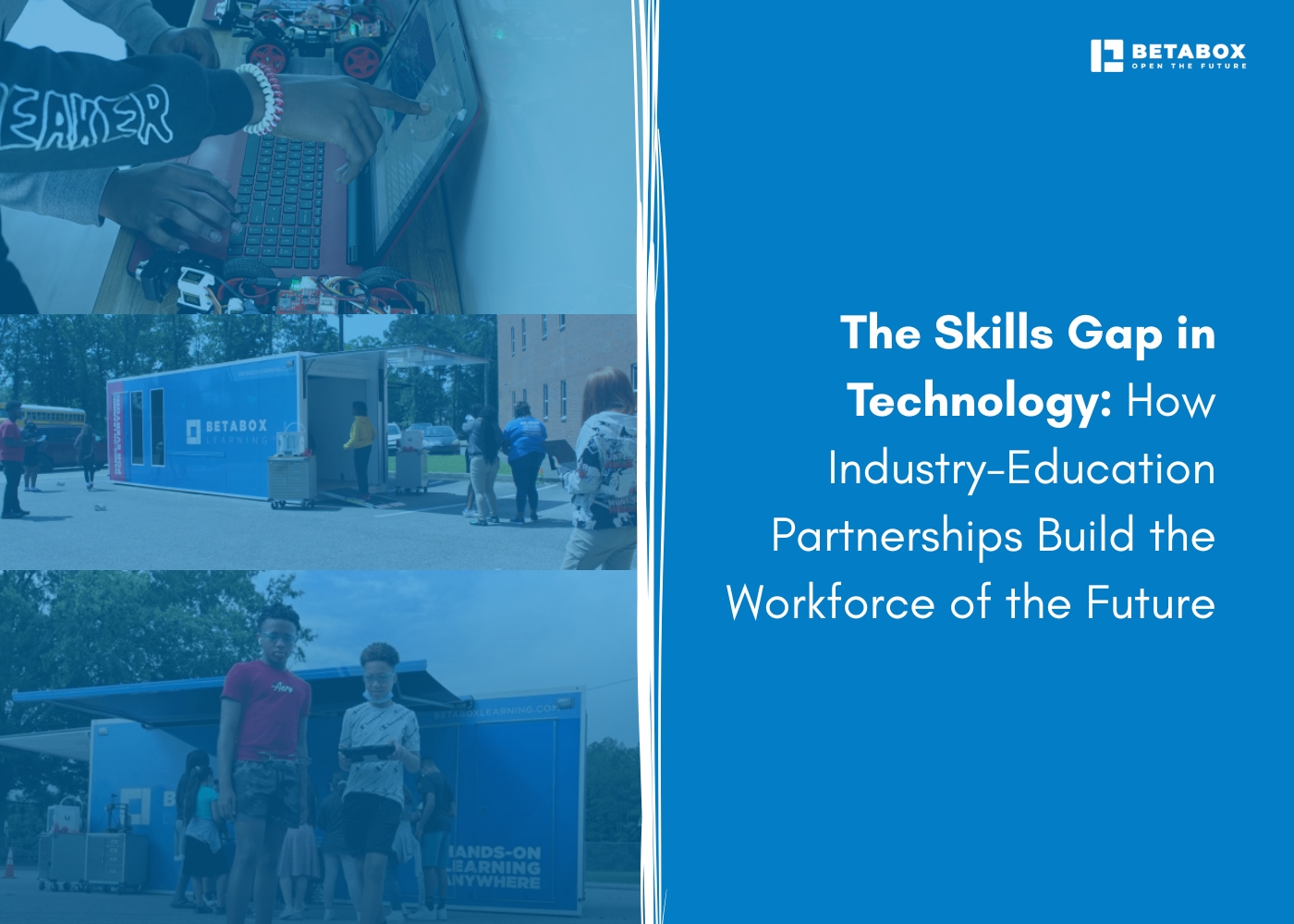

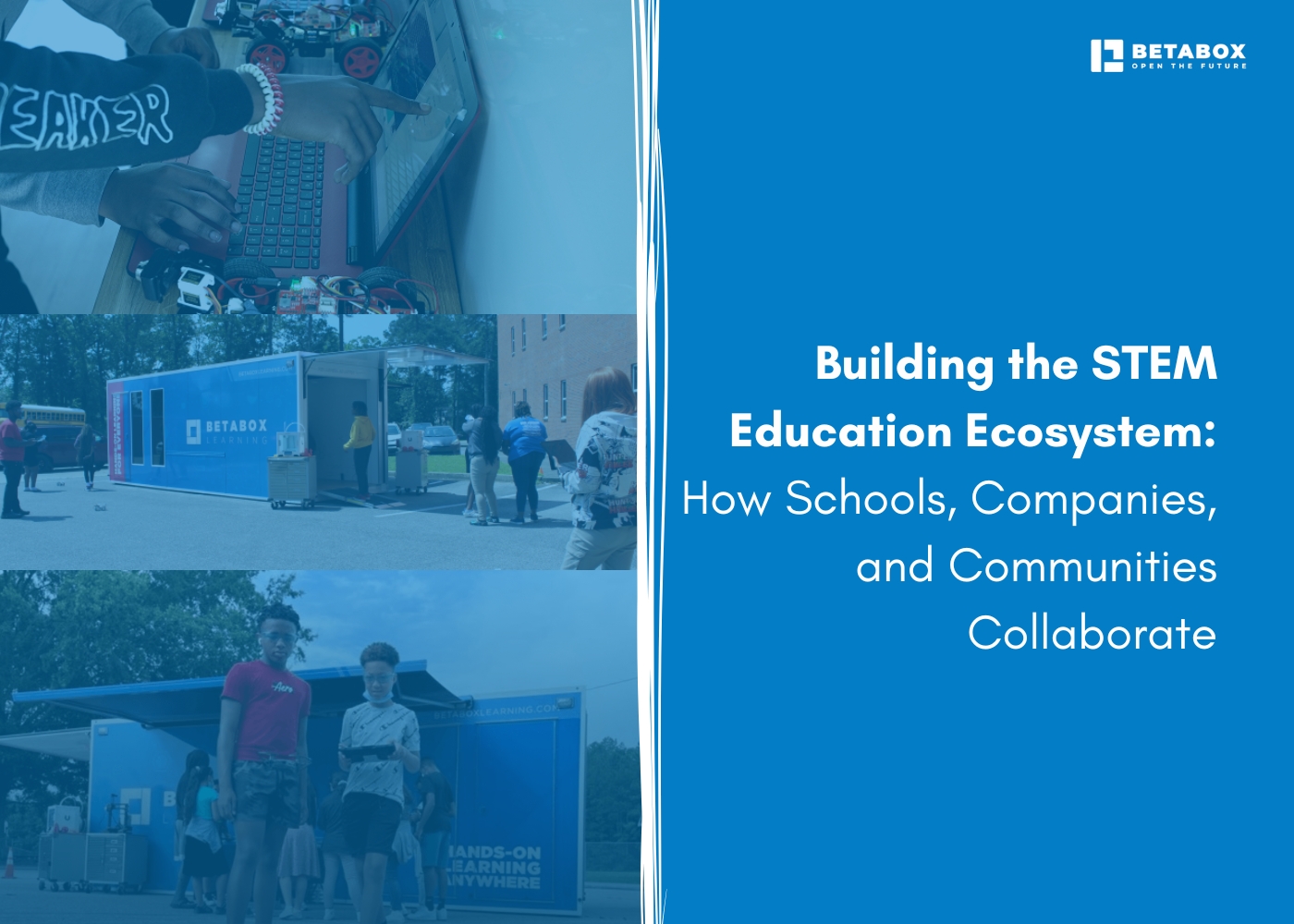

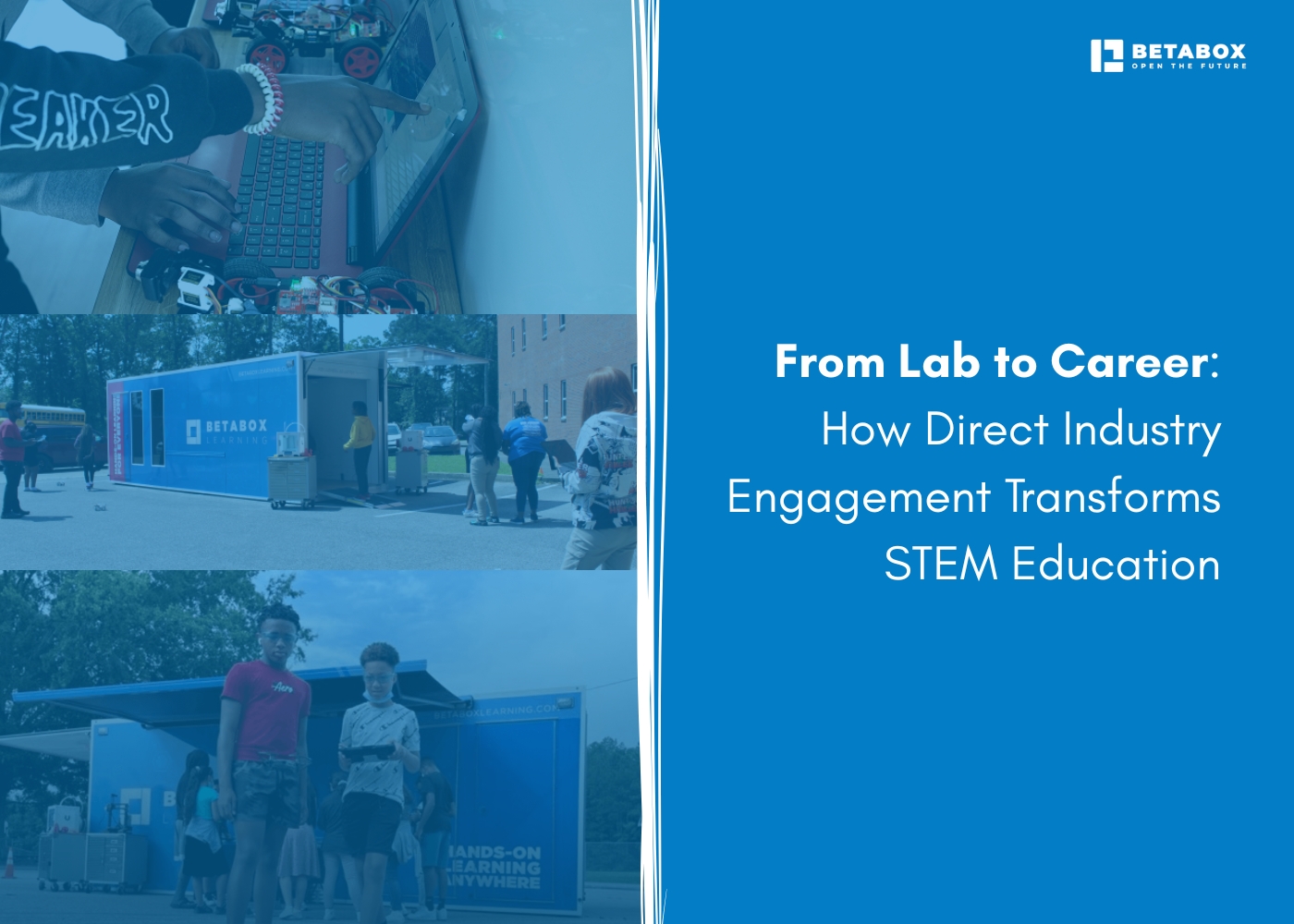

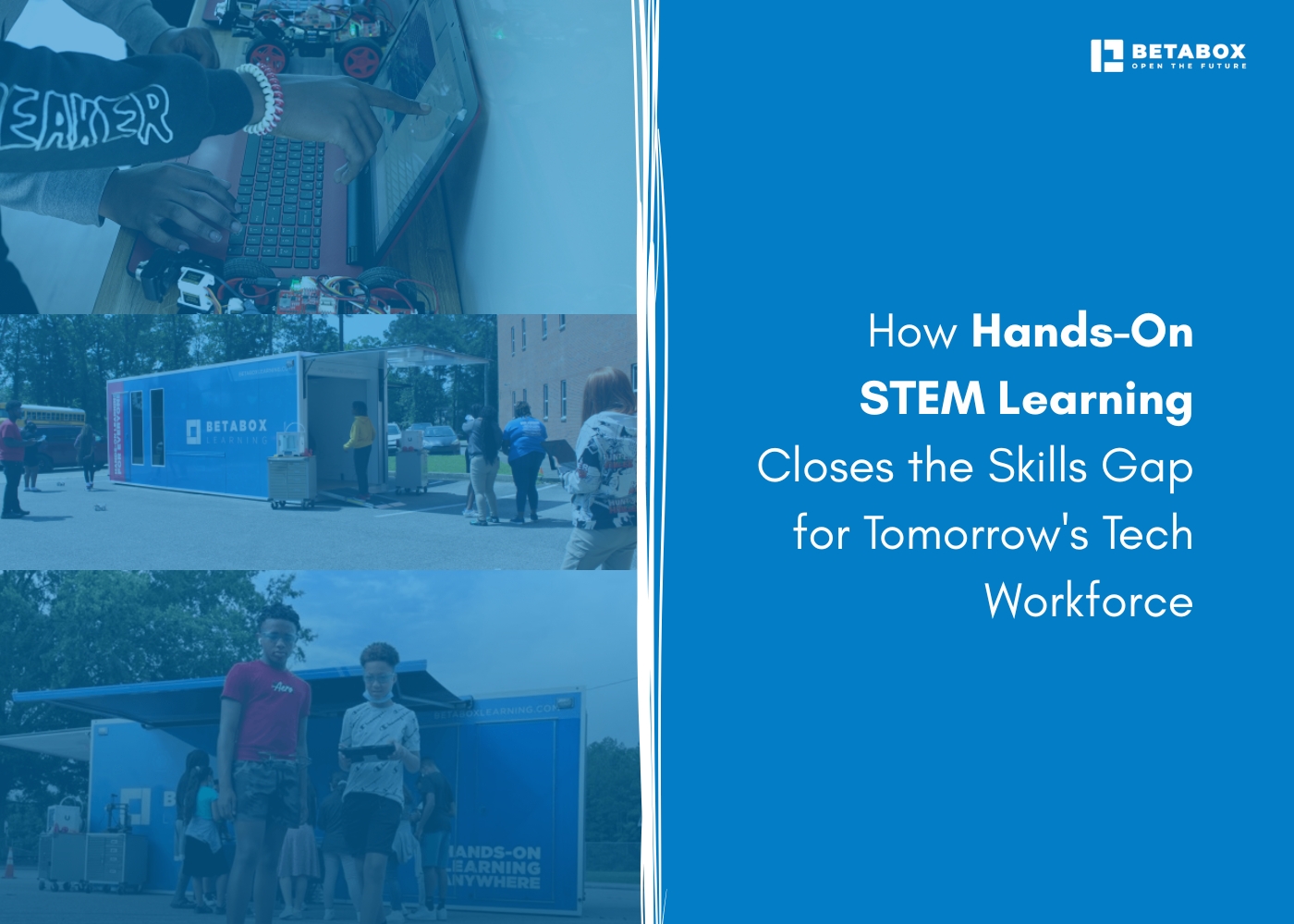

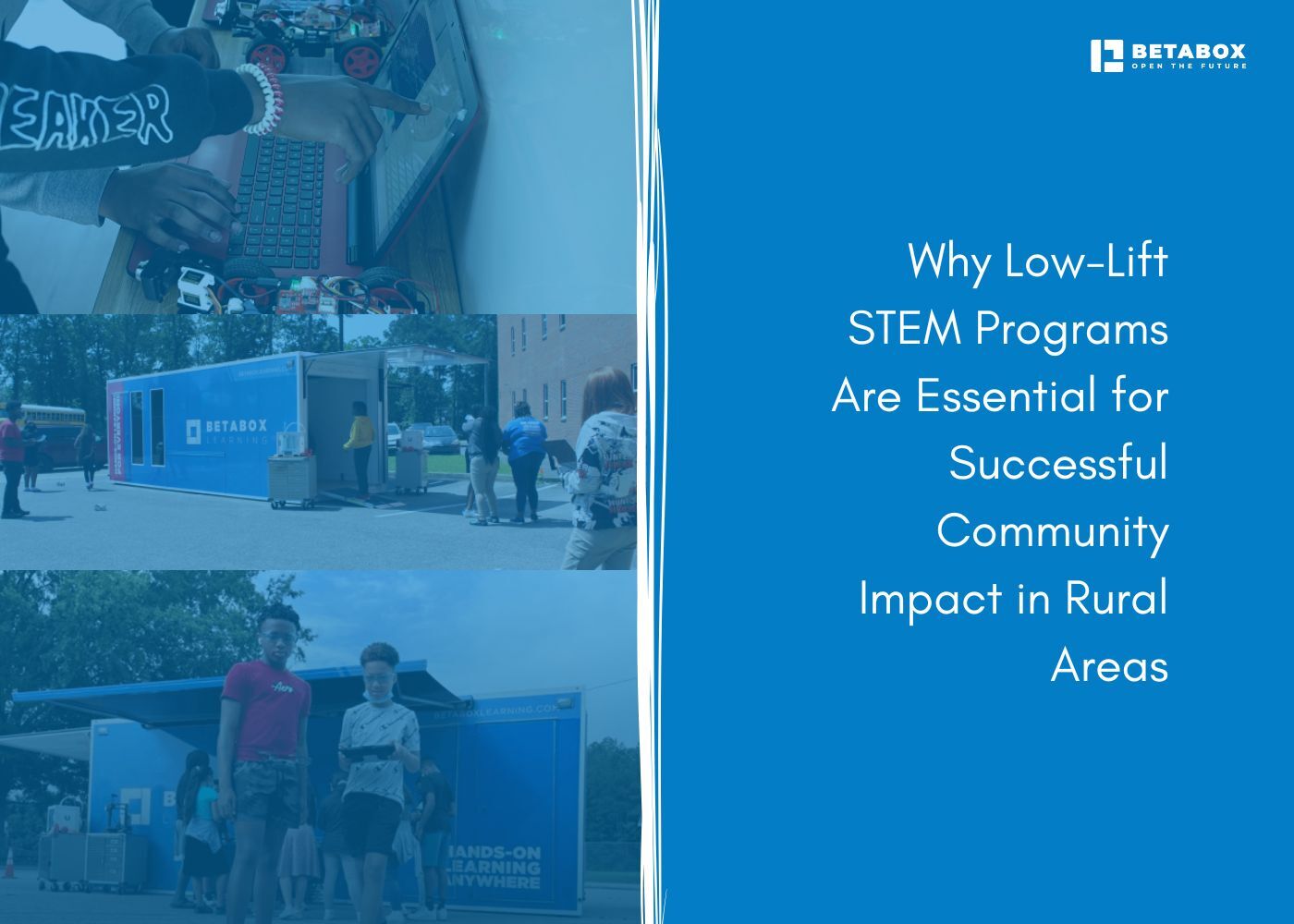

.jpg)

.jpg)

.jpg)

.jpg)





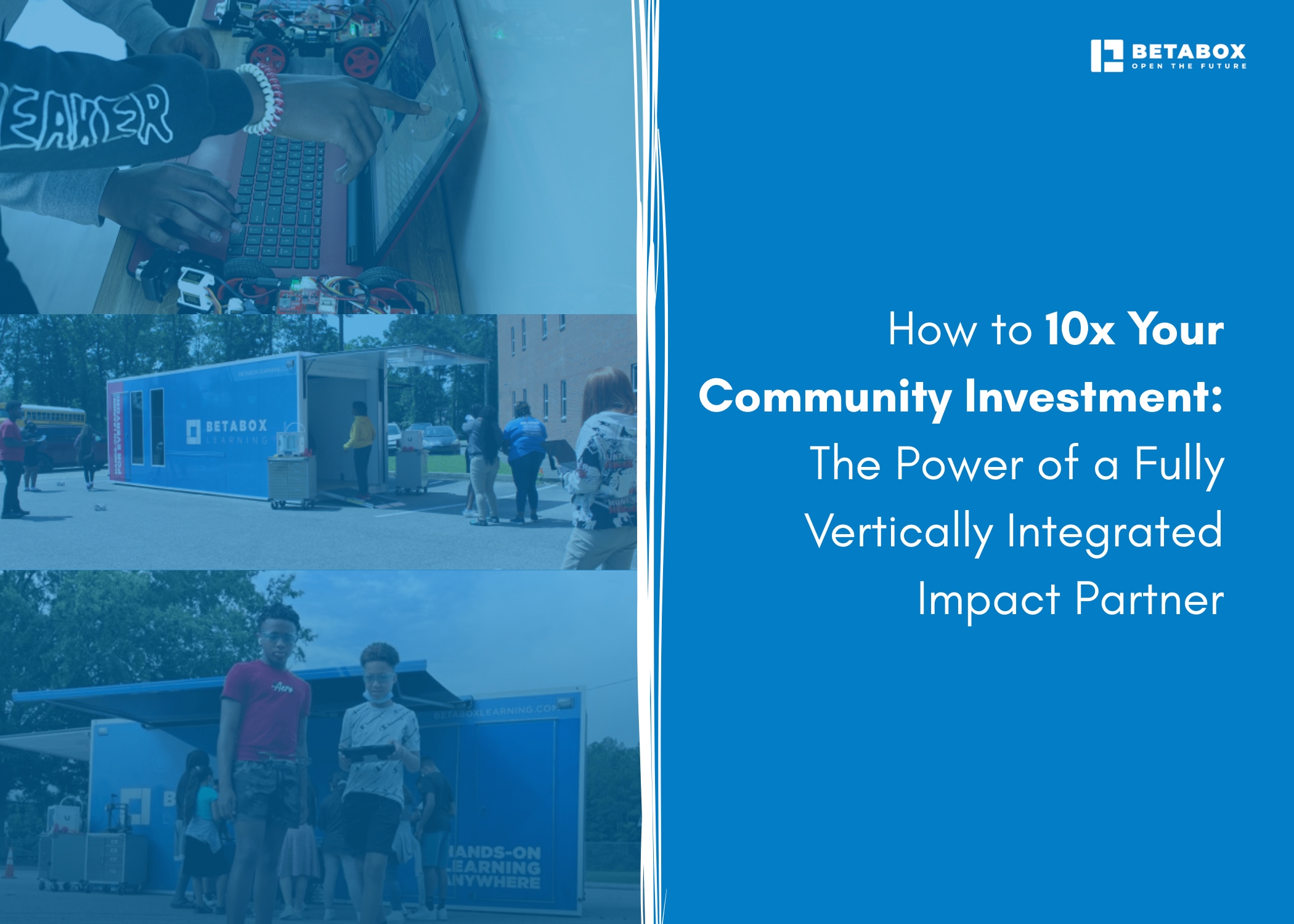

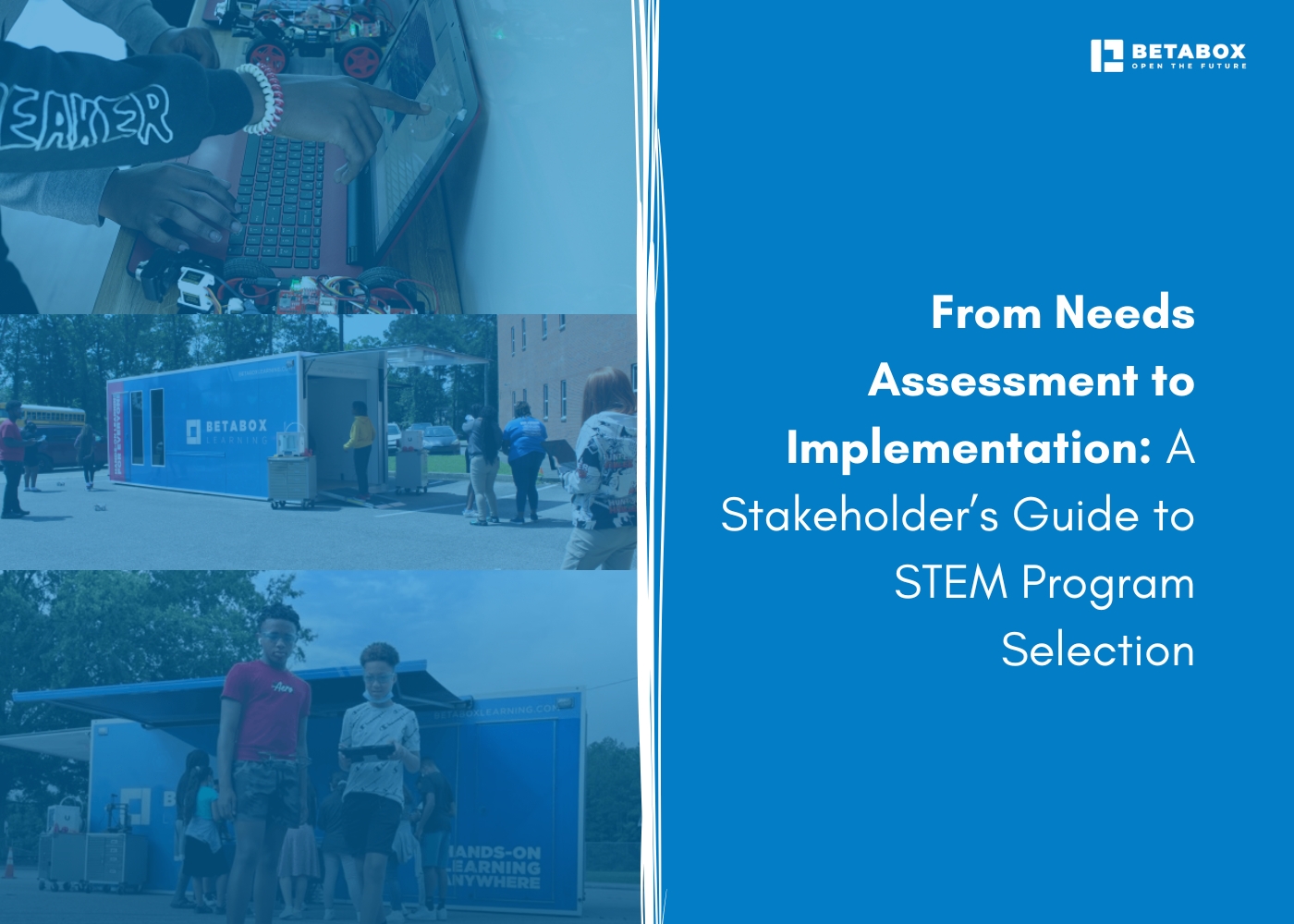

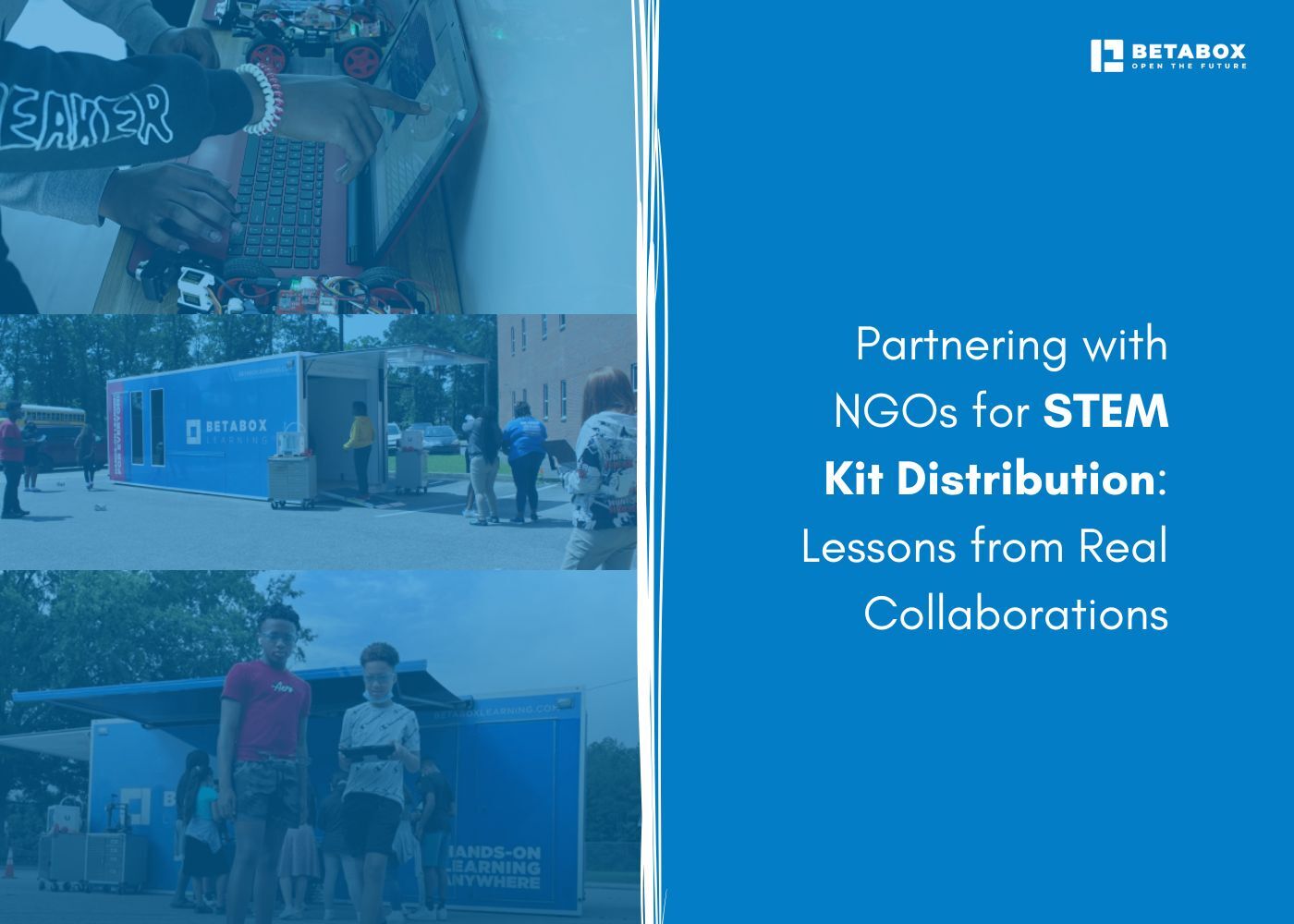

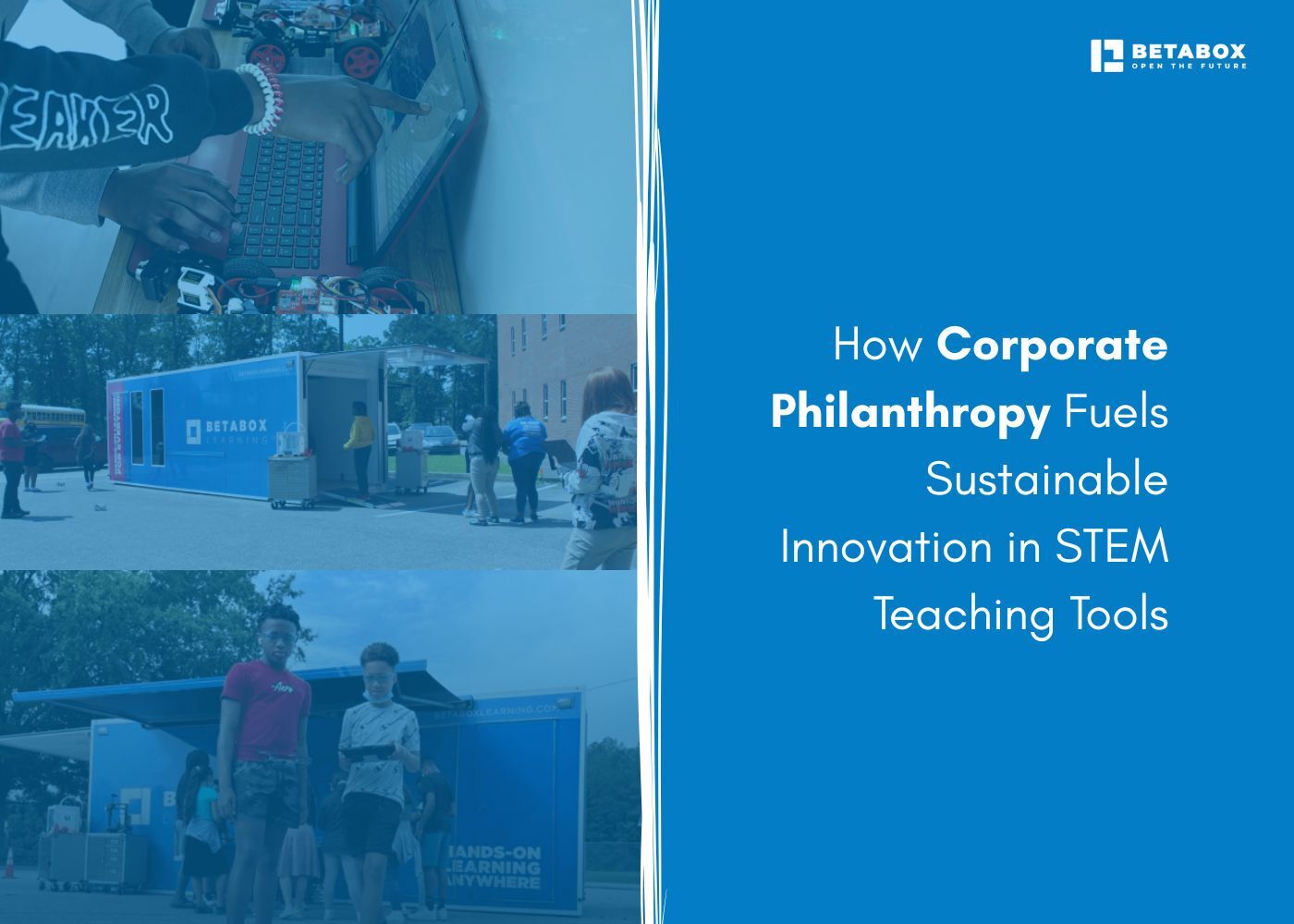

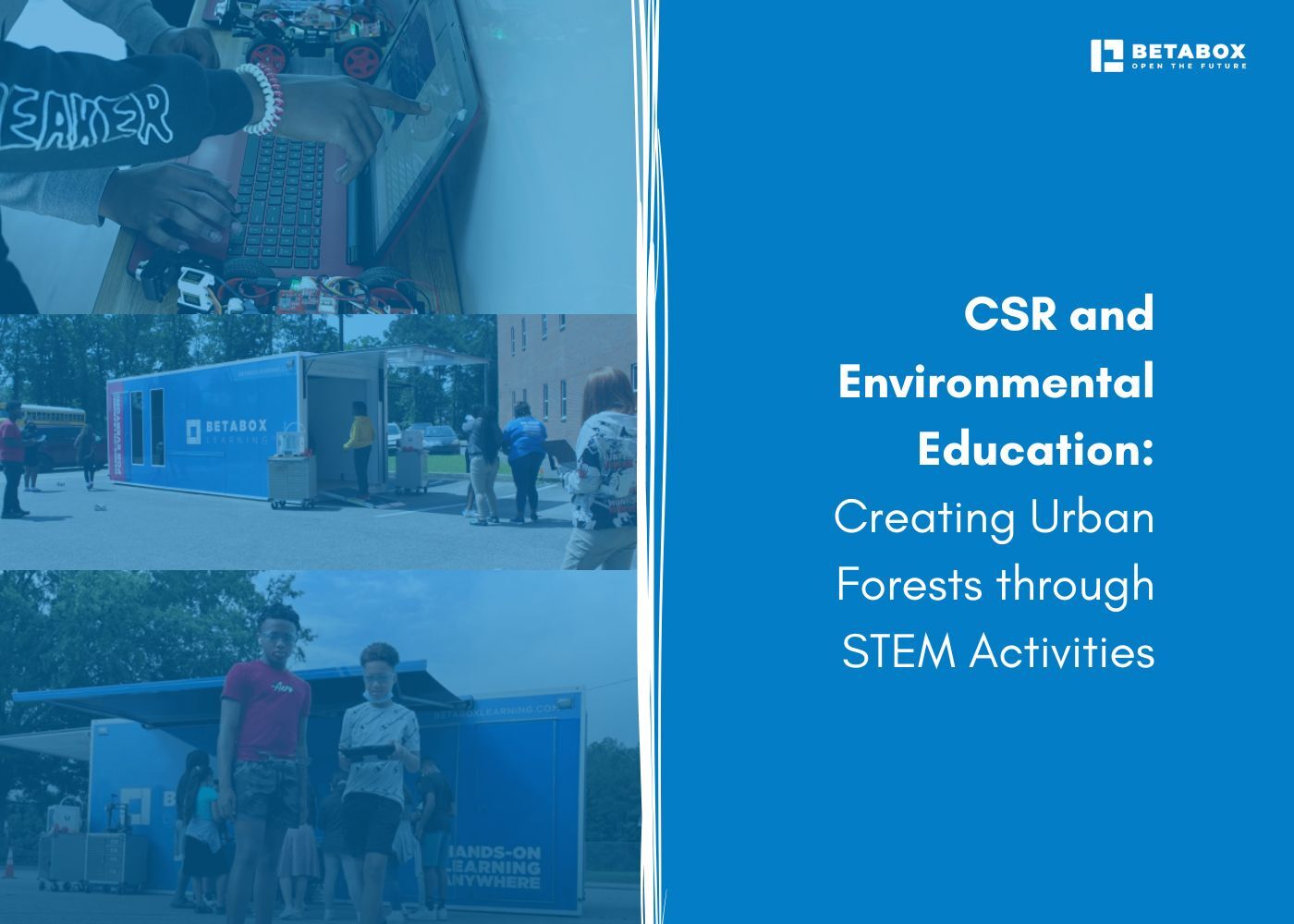

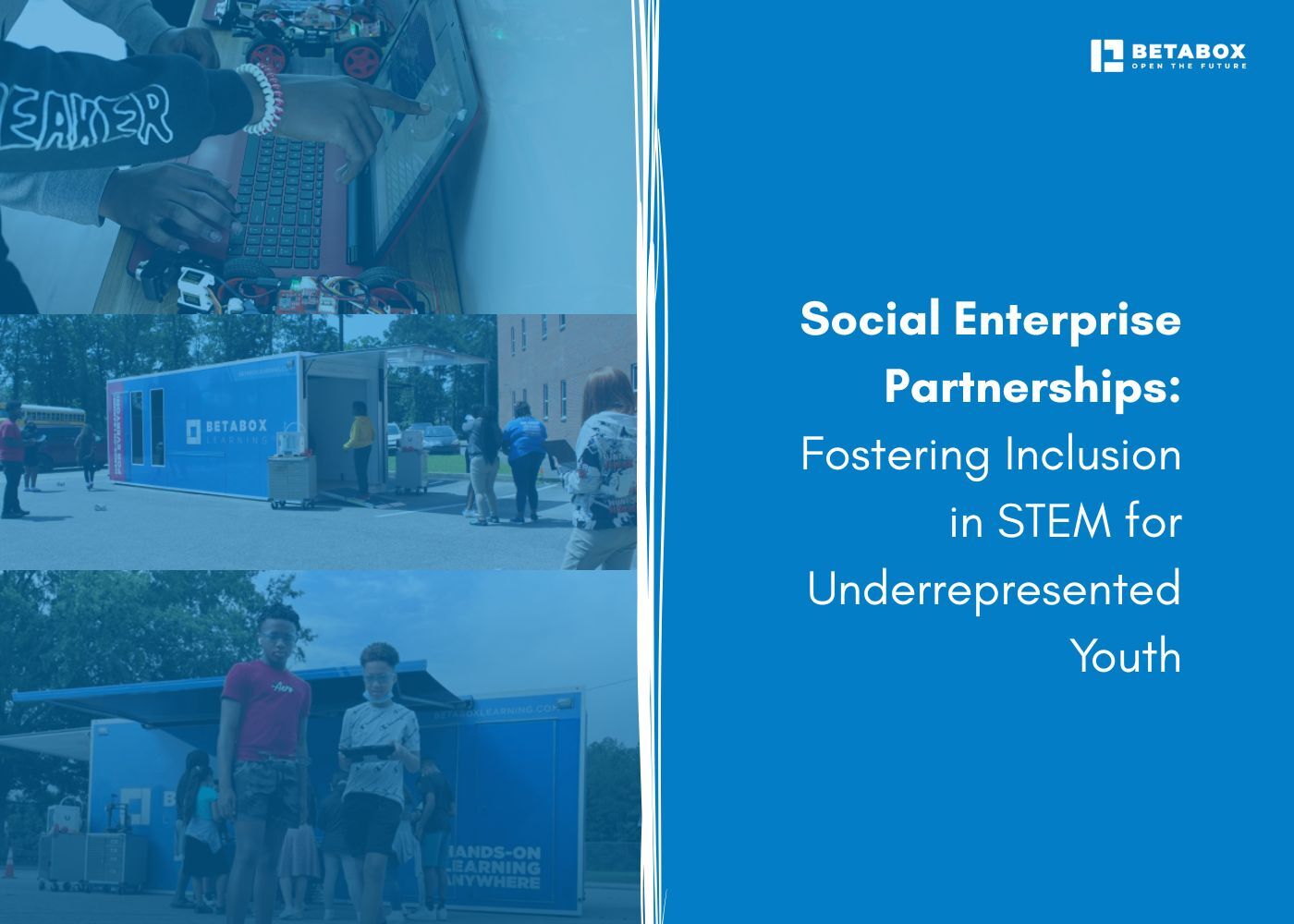

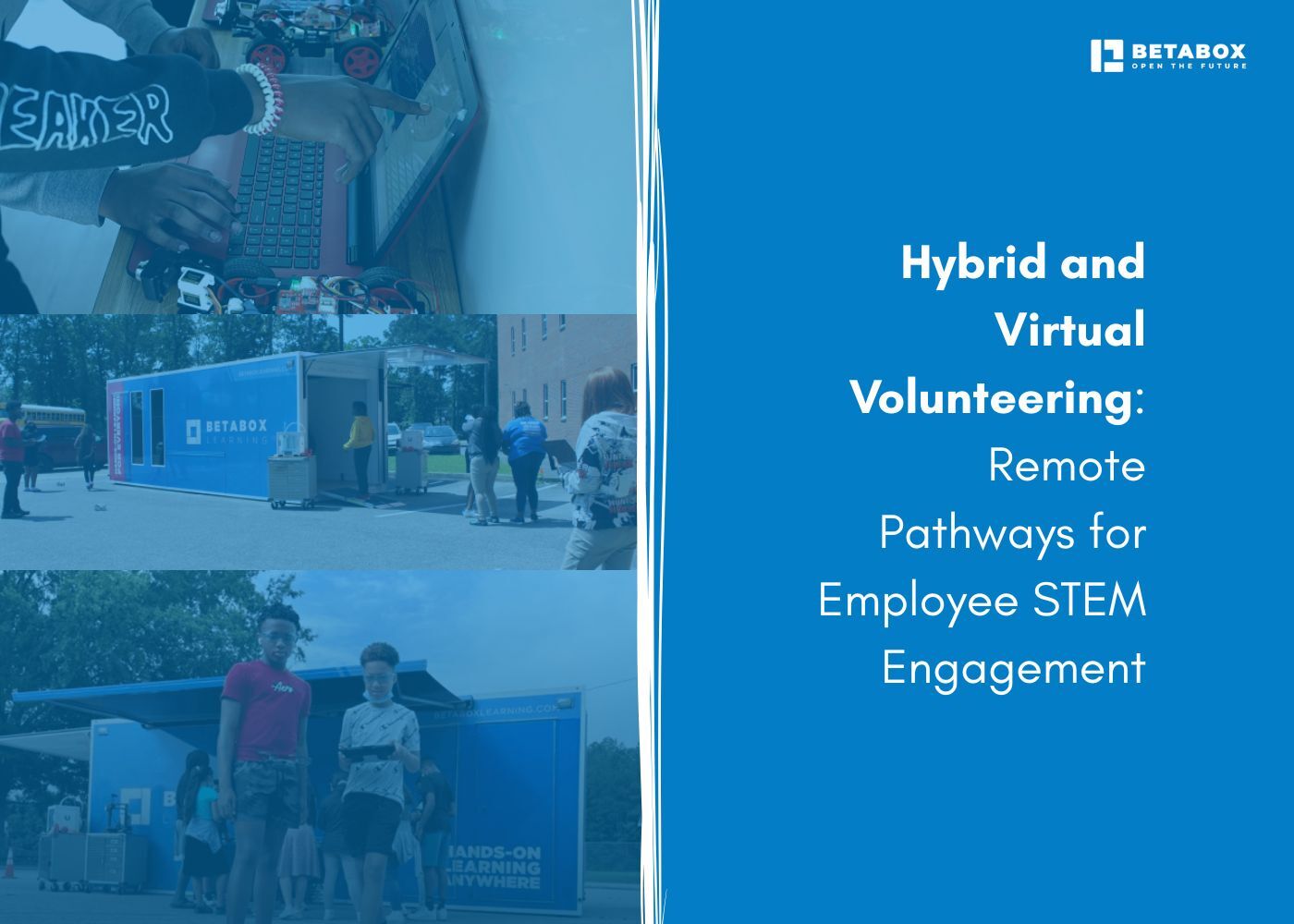

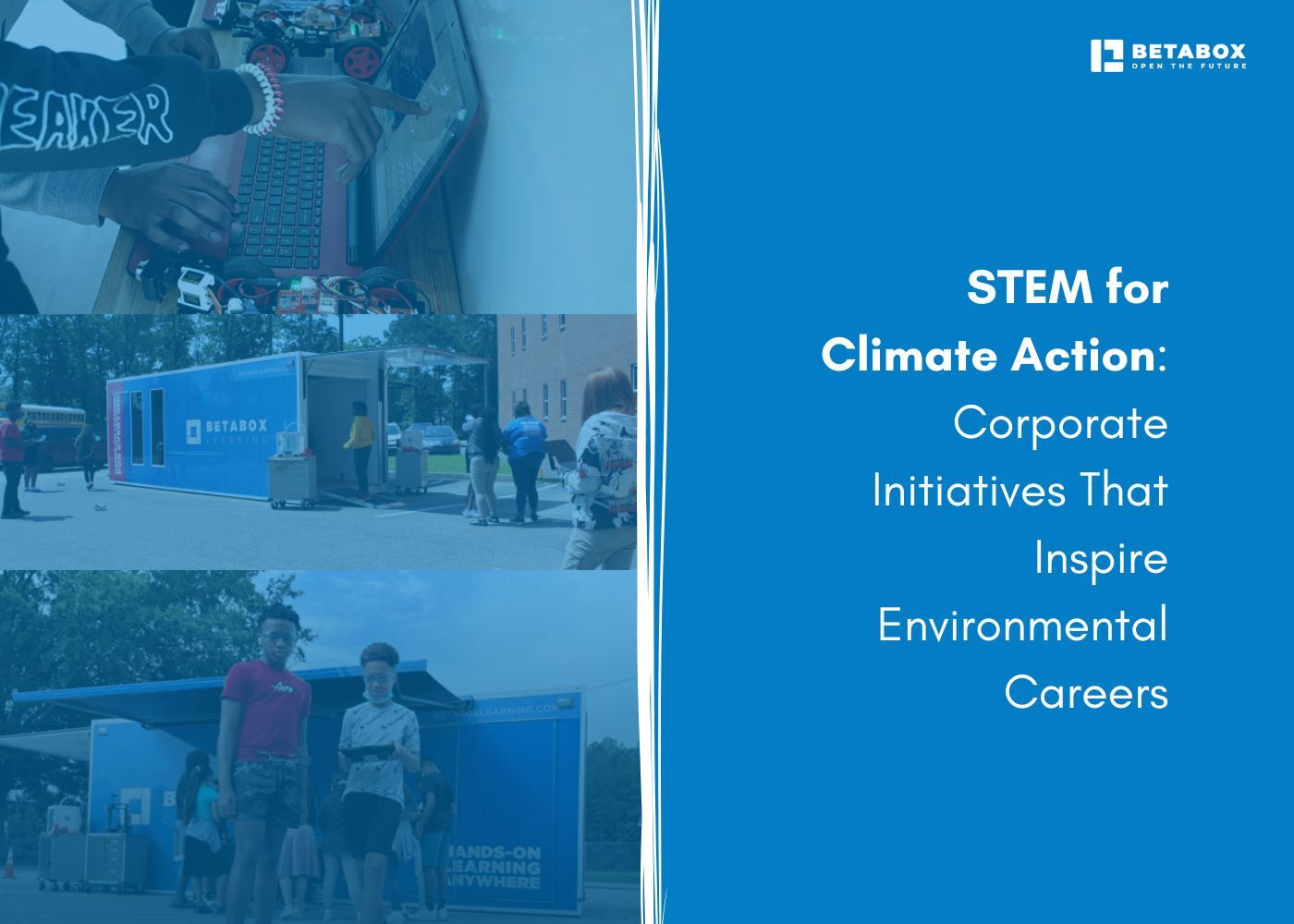



At Betabox Learning, we are passionate about making hands-on STEM curricula accessible to all students.

Join our newsletter to stay in the loop on all things Betabox and the future of STEM education.
By submitting your email address, you agree to our Privacy policy and Terms of Service. You can unsubscribe any time via the link in your email.
© 2025 Betabox. All Rights Reserved
